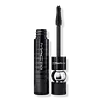What's inside
What's inside
 Key Ingredients
Key Ingredients

 Benefits
Benefits

 Concerns
Concerns

 Ingredients Side-by-side
Ingredients Side-by-side

Cyclopentasiloxane
EmollientWater
Skin ConditioningTrimethylsiloxysilicate
EmollientButylene Glycol
HumectantPEG/PPG-18/18 Dimethicone
EmulsifyingSorbitan Sesquioleate
EmulsifyingTribehenin
EmollientMagnesium Sulfate
Phenyl Trimethicone
Skin ConditioningDimethicone Crosspolymer
Emulsion StabilisingDimethicone
EmollientMethicone
EmollientSilica
AbrasiveNylon-12
Olea Europaea Leaf Extract
PerfumingAlgae Extract
EmollientOryza Sativa Bran Extract
Skin ConditioningGlycerin
HumectantEthylhexylglycerin
Skin ConditioningLaureth-7
EmulsifyingXanthan Gum
EmulsifyingTocopheryl Acetate
AntioxidantSodium Hyaluronate
HumectantTocopherol
AntioxidantCaprylyl Glycol
EmollientPentaerythrityl Tetra-Di-T-Butyl Hydroxyhydrocinnamate
AntioxidantPhenoxyethanol
PreservativeChlorphenesin
AntimicrobialSorbic Acid
PreservativeCI 77891
Cosmetic ColorantCI 77492
Cosmetic ColorantCI 77491
Cosmetic ColorantCI 77499
Cosmetic ColorantCyclopentasiloxane, Water, Trimethylsiloxysilicate, Butylene Glycol, PEG/PPG-18/18 Dimethicone, Sorbitan Sesquioleate, Tribehenin, Magnesium Sulfate, Phenyl Trimethicone, Dimethicone Crosspolymer, Dimethicone, Methicone, Silica, Nylon-12, Olea Europaea Leaf Extract, Algae Extract, Oryza Sativa Bran Extract, Glycerin, Ethylhexylglycerin, Laureth-7, Xanthan Gum, Tocopheryl Acetate, Sodium Hyaluronate, Tocopherol, Caprylyl Glycol, Pentaerythrityl Tetra-Di-T-Butyl Hydroxyhydrocinnamate, Phenoxyethanol, Chlorphenesin, Sorbic Acid, CI 77891, CI 77492, CI 77491, CI 77499
Water
Skin ConditioningSilica
AbrasiveStearic Acid
CleansingGlyceryl Stearate
EmollientSynthetic Beeswax
Emulsion StabilisingParaffin
PerfumingPolyisobutene
Kaolin
AbrasiveAcrylates/Ethylhexyl Acrylate Copolymer
Aminomethyl Propanediol
BufferingCopernicia Cerifera Wax
Vp/Eicosene Copolymer
Isostearic Acid
CleansingTocopheryl Acetate
AntioxidantPanthenol
Skin ConditioningPantethine
EmollientTrimethylpentanediol/Adipic Acid/Glycerin Crosspolymer
Skin ConditioningPEG-9 Dimethicone
Skin ConditioningCaprylyl Glycol
EmollientHydroxyethylcellulose
Emulsion StabilisingNylon-6
Pvp
Emulsion StabilisingLaureth-21
CleansingSimethicone
EmollientPhenethyl Alcohol
Masking1,2-Hexanediol
Skin ConditioningDisodium EDTA
Chloroxylenol
AntimicrobialPotassium Sorbate
PreservativePhenoxyethanol
PreservativeCI 77491
Cosmetic ColorantCI 77492
Cosmetic ColorantCI 77499
Cosmetic ColorantMica
Cosmetic ColorantCI 19140
Cosmetic ColorantCI 77288
Cosmetic ColorantCI 77289
Cosmetic ColorantCI 75470
Cosmetic ColorantCI 77891
Cosmetic ColorantCI 77163
Cosmetic ColorantCI 42090
Cosmetic ColorantCI 77007
Cosmetic ColorantCI 77266
Cosmetic ColorantWater, Silica, Stearic Acid, Glyceryl Stearate, Synthetic Beeswax, Paraffin, Polyisobutene, Kaolin, Acrylates/Ethylhexyl Acrylate Copolymer, Aminomethyl Propanediol, Copernicia Cerifera Wax, Vp/Eicosene Copolymer, Isostearic Acid, Tocopheryl Acetate, Panthenol, Pantethine, Trimethylpentanediol/Adipic Acid/Glycerin Crosspolymer, PEG-9 Dimethicone, Caprylyl Glycol, Hydroxyethylcellulose, Nylon-6, Pvp, Laureth-21, Simethicone, Phenethyl Alcohol, 1,2-Hexanediol, Disodium EDTA, Chloroxylenol, Potassium Sorbate, Phenoxyethanol, CI 77491, CI 77492, CI 77499, Mica, CI 19140, CI 77288, CI 77289, CI 75470, CI 77891, CI 77163, CI 42090, CI 77007, CI 77266
 Reviews
Reviews

Ingredients Explained
These ingredients are found in both products.
Ingredients higher up in an ingredient list are typically present in a larger amount.
Caprylyl Glycol is a humectant and emollient, meaning it attracts and preserves moisture.
It is a common ingredient in many products, especially those designed to hydrate skin. The primary benefits are retaining moisture, skin softening, and promoting a healthy skin barrier.
Though Caprylyl Glycol is an alcohol derived from fatty acids, it is not the kind that can dry out skin.
This ingredient is also used as a preservative to extend the life of products. It has slight antimicrobial properties.
Learn more about Caprylyl GlycolCi 77491 is also hydrated iron III oxide. It's sole purpose is to give a red/pink hue to products.
Iron III oxides are classified as inorganic chemicals for coloring.
Synthetically created Ci 77491 is considered safer than those naturally found. This is because the synthetically created version may contain less impurities. Iron oxides are generally non-toxic and non-allergenic.
Learn more about CI 77491Ci 77492 is also hydrated iron III oxide. It's sole purpose is to give a yellow hue to products.
Iron III oxides are classified as inorganic chemicals for coloring.
Synthetically created Ci 77492 is considered safer than those naturally found. This is because the synthetically created version may contain less impurities. Iron oxides are generally non-toxic and non-allergenic.
Learn more about CI 77492Ci 77499 is also hydrated iron III oxide. It is created from mixing red and black iron oxides. This helps give shades of darkness to a product.
Iron III oxides are classified as inorganic chemicals for coloring.
Ci 77891 is a white pigment from Titanium dioxide. It is naturally found in minerals such as rutile and ilmenite.
It's main function is to add a white color to cosmetics. It can also be mixed with other colors to create different shades.
Ci 77891 is commonly found in sunscreens due to its ability to block UV rays.
Learn more about CI 77891Phenoxyethanol is a preservative that has germicide, antimicrobial, and aromatic properties. Studies show that phenoxyethanol can prevent microbial growth. By itself, it has a scent that is similar to that of a rose.
It's often used in formulations along with Caprylyl Glycol to preserve the shelf life of products.
Silica, also known as silicon dioxide, is a naturally occurring mineral. It is used as a fine, spherical, and porous powder in cosmetics.
Though it has exfoliant properties, the function of silica varies depending on the product.
The unique structure of silica enhances the spreadability and adds smoothness, making it a great texture enhancer.
It is also used as an active carrier, emulsifier, and mattifier due to its ability to absorb excess oil.
In some products, tiny microneedles called spicules are made from silica or hydrolyzed sponge. When you rub them in, they lightly polish away dead skin layers and enhance the penetration of active ingredients.
Learn more about SilicaTocopheryl Acetate is AKA Vitamin E. It is an antioxidant and protects your skin from free radicals. Free radicals damage the skin by breaking down collagen.
One study found using Tocopheryl Acetate with Vitamin C decreased the number of sunburned cells.
Tocopheryl Acetate is commonly found in both skincare and dietary supplements.
Learn more about Tocopheryl AcetateWater. It's the most common cosmetic ingredient of all. You'll usually see it at the top of ingredient lists, meaning that it makes up the largest part of the product.
So why is it so popular? Water most often acts as a solvent - this means that it helps dissolve other ingredients into the formulation.
You'll also recognize water as that liquid we all need to stay alive. If you see this, drink a glass of water. Stay hydrated!
Learn more about Water